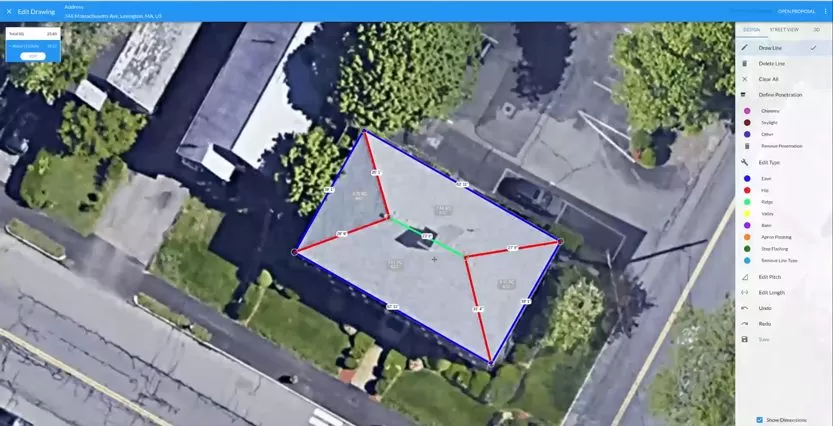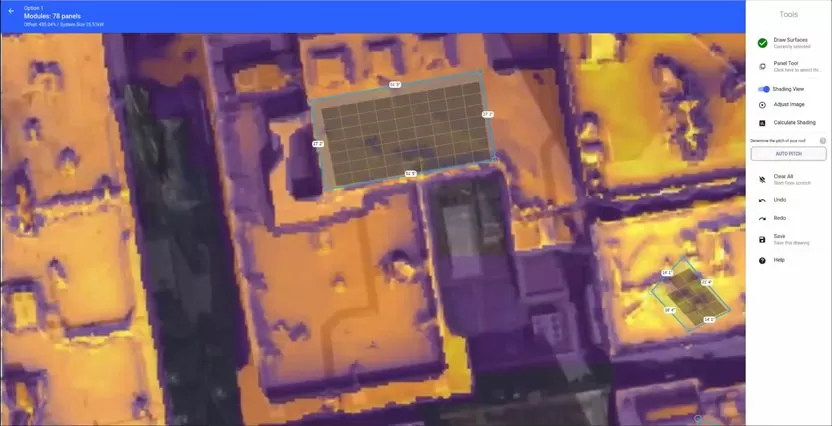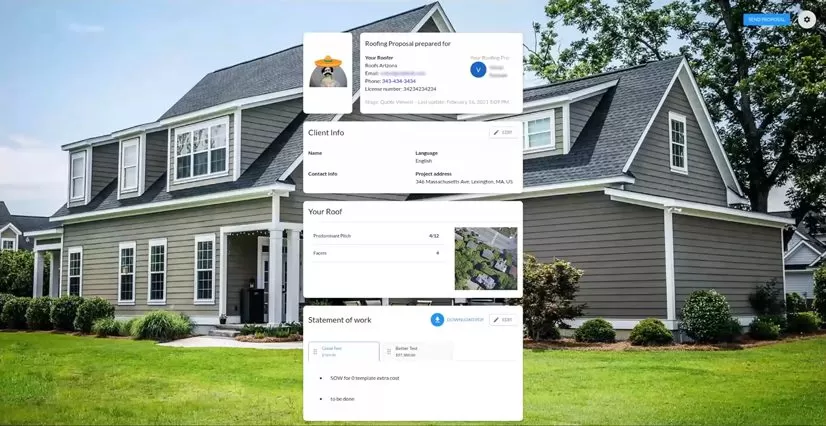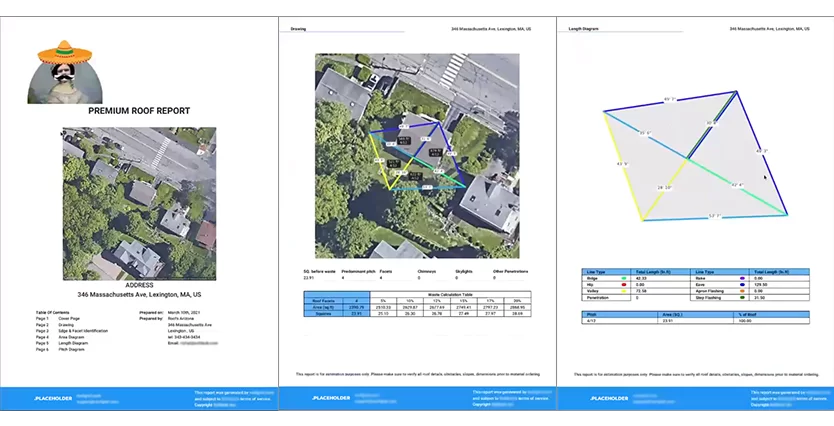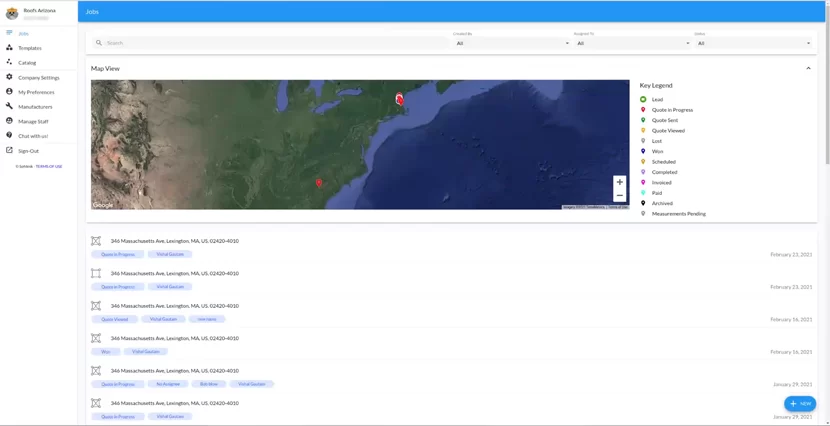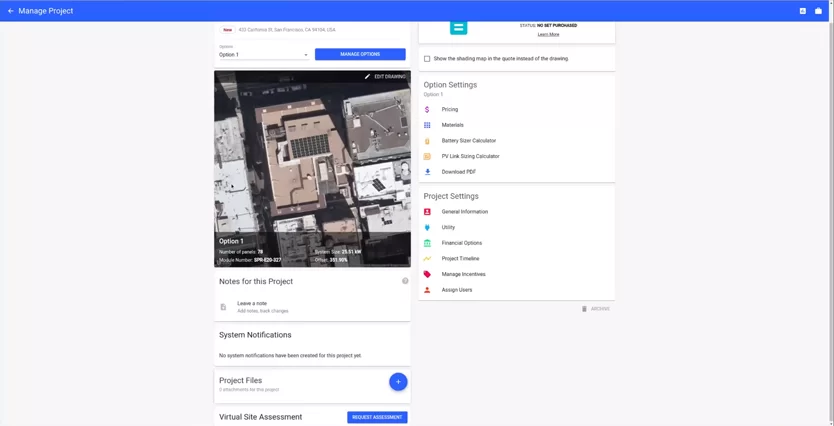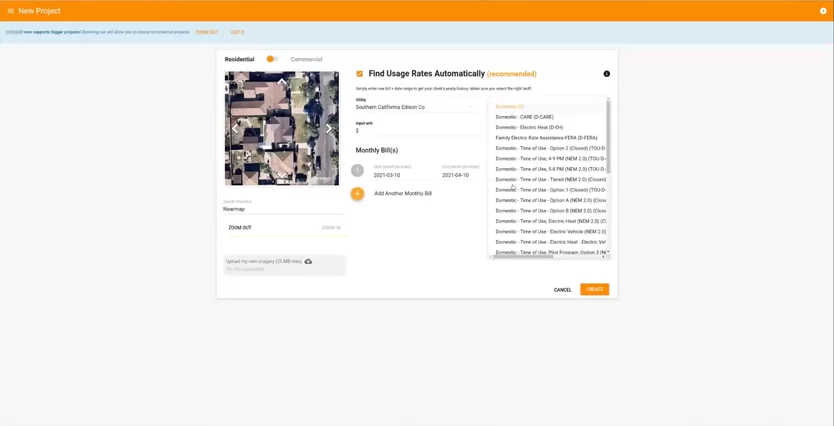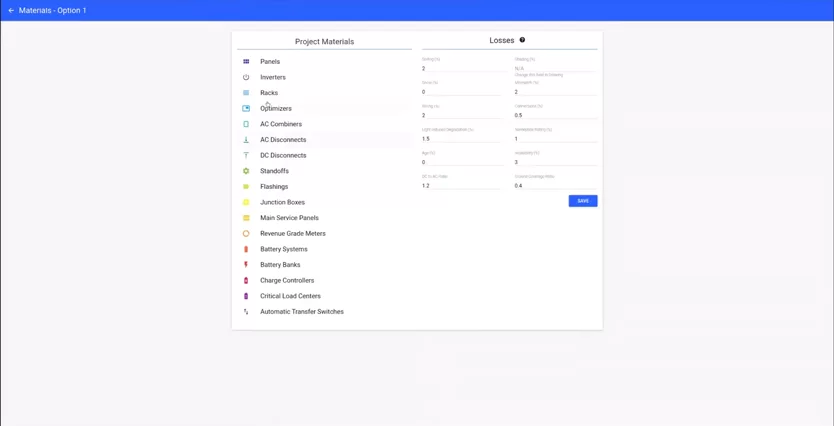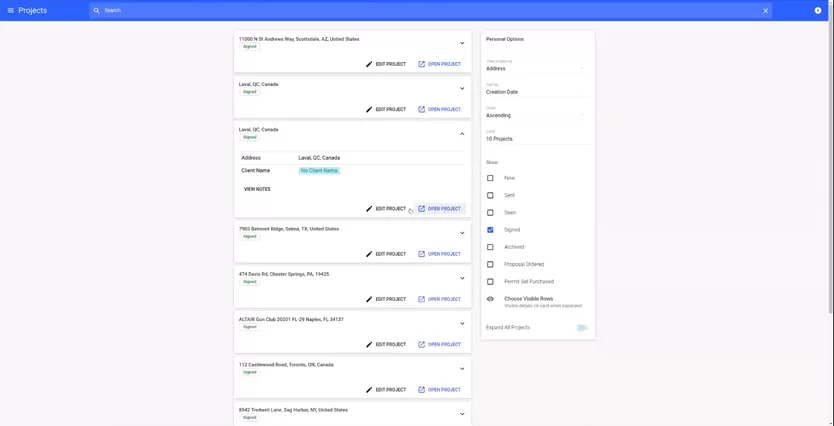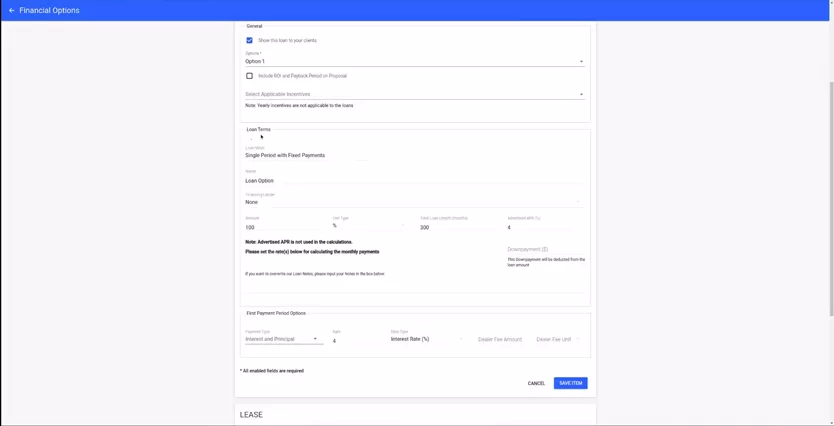Challenge
The company has been developing software as a service for roofing and solar paneling companies and professionals. The software was designed to help those contractors calculate each project’s cost, request materials from suppliers, quote clients, manage sales and more.
For two years, the company had been building the product when it realized it needed a software development partner to speed things up. After considering several developers, the company chose Elinext. We had relevant experience and quickly provided programmers skilled for the job.
Solution
The client already had their own Agile development processes up and running when we joined. We had already been working with that methodology, so our team blended in like part of their own.
The software includes two separate products: a roofing tool and a solar paneling tool. Although different in purpose, these products have similar features.
Size Measurements
The roofing contractor can use satellite images of a roof and draw lines over the image to measure the roof’s size. The lines factor in all three dimensions: slope angles and pitches are calculated automatically.
Based on the measurements, the system then estimates how much material will be needed to cover the roof, and what the cost would be. The more accurate the line drawn, the more exact the final figures. If users struggle with drawing and measuring, they can ask our client to do it for them for a small fee.
This feature works similarly to the solar paneling tool. The system calculates how many solar modules of each type will be required. To allow the homeowner to get the most energy from the sun, it also estimates the slope and orientation of the potential installation.
Supplies
Roofers can create catalogs of the materials and solar panels they use. The catalogs include details like material type, specific measurement units, manufacturers, power (for solar panels), and prices. The system uses those details to calculate the final price.
Once a project has been approved, roofers can issue a bill of materials to their supplier.
Site Assessment
To save roofers time and respond to social distancing requirements enforced during the COVID-19 pandemic, we built the site assessment feature. It allows homeowners to specify their roof’s parameters, such as size and current state, and upload photographs.
This helps roofers better estimate the project without physically communicating with the homeowner.
Quotes
Once a project has been estimated, roofers can create a nice-looking interactive quote from a template and send it to the homeowner. The quote includes material options, the cost of materials and labor, margins, discounts, and other costs. It also contains an automatically generated roof report with technical details and images of the future project.
The homeowner will be asked to specify their preferences, such as what material and color they would like to use. Based on those preferences, the system will calculate the final price. Finally, the homeowner will be able to submit the project by drawing a signature with their mouse or finger.
As for solar paneling, there will be additional information, such as power generated and energy savings.
Lead Management
The software has all the features of a typical CRM. In the dashboard, roofers can see all their potential, earlier and current clients. Those client records come with statuses, such as quote sent, quote in progress, lead lost, invoiced, etc.
A roofer can send a quote from the dashboard. Once it’s been viewed, the system will change the status to “quote viewed”.
Savings on Electricity
The most important thing to know about solar panels is by how much they cut the electricity bill. The software lets roofers figure that out for each home they work on.
The system connects with multiple third-party APIs, including those of utility companies. This allows roofers to type in an address and see how much electricity a building uses on average.
On the other hand, each solar panel can generate a particular amount of energy based on how much sunshine it gets. A roofer can check a roof’s exposure to the sun using integration with Google’s Project Sunroof alongside automated calculations from the house’s geographical features. As a result, they will know how much energy the sun can give them.
The system will compare the power the house uses against the power that could be produced by solar panels. As a result, the homeowner will see their potential savings on electricity and even any surpluses in the quote.
Financing
We integrated the system with partnering financial organizations’ services. This allows roofers to request a loan for a homeowner to fund their roofing or solar paneling project.
Compliance
The software is compliant with all data security regulations and even regional architectural requirements.
For example, one US state regulator specifies how much space must be left between the edge of a roof and solar paneling for fire-safety purposes. When designing a project in that particular US state, roofers will see the area that can’t be covered with panels highlighted in red.
Admin Panel
Because our client runs many different promotional and marketing campaigns, we helped them build an extremely flexible admin panel. System administrators can change the rules without coding.
Consider this example. Our client launched a campaign that rewarded managers with a $50 Amazon account for each roofer application for a loan from a partnering financial organization. The admins set up the automated reward mechanism in the system.
Result
The client was pleased by the results they could see very shortly after we pitched in. Month by month, the number of roofing and solar paneling contractors registering on the platform and subscribing to the service kept growing.
At the time of writing, we have been working on the project for roughly two years. Our team is now developing further features, such as homeowner’s payment schedule, AI-enabled solar efficiency calculation, and more.









